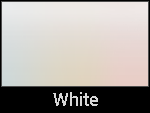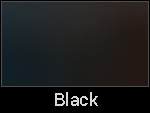Design Guide
Colonists have markings that are dictated by pairs of alleles (such as Ink Ink and Co co) in a special code called a genome or genotype. For the most part, you don't actually have to know what those codes mean, as each colonist also has a phenotype, which is essentially the translation of the genotype into English. If you want to get into breeding your colonists, you'll want to look at their genomes so you can know what two alleles for each gene your colonist can pass on to their offspring: every parent has a 50/50 chance of passing on either of their alleles to each child.
There are also different types of markings, with the following categories:
Colonists can also have mutations, which are rarer and affect different parts of the colonist, mostly the physical traits of the body such as hair length. They can add fantastical elements like mushrooms or wings.
There are some non-genetic nuances and free white/black markings we allow on Xiunus. As they have their own rules and specifics, they have their own full page.

Colonists can have almost any iris colour, including heterochromia, for free. No colonist should ever have pure white or pure black eyes, and if it needs to be zoomed in to see a difference, we may ask you to change it. Sclera are generally not visible, but when they are, they should be either natural white/cream or a dark grey/black.
Pupil shape is dictated by the species.
- Tsabhua have generally slitted pupils that can expand like cats.
- Belemoid and Tark'ee have generally round pupils.
Pupils should be generally sharp edged, but can have a slight blur. They must also be quite dark, but can be affected slightly by eye colour. However, pale pupils or exceptionally blurry pupils will require that the colonist be blind.
- Albino characters should have pink, red, or pale blue eyes.

Skin (the corner of the eye, inner ear, nostrils, and pawpads) can range from slightly lighter than the fur with a pinkish hue to near-black. It should never be unnaturally brighter or much more saturated than the fur.
The inside of the mouth and tongue/pharengeal jaw can be brighter or darker and more saturated than the fur and can even be more fantastical colours, such as yellow, green, black, or blue, so long as the saturation isn't extreme for those.

The mane (tail tufts, long belly fur, long spine fur, etc.) should be darker than the fur it's touching unless it's being covered by a marking.
- Flaxen allows for a lighter mane.

Claws should be darker than the fur they're touching and should be generally similar to or lower than the base coat, as far as saturation and hue go.
- Flaxen will allow claws to be lighter than the fur they're touching.
- Nail Polish will allow for unnatural colours and shades for claws.
- Artifice can affect only the claws, if you would like.

Horns and beaks can be darker or lighter than the markings around them. They can be ivory, black, white, or similar natural colours. They also can have their colours affected by markings elsewhere on the body or be the same colour as the base coat. Consider striped horns on a colonist with Stripe or even spots on one with roan or marozi! These markings don't have to touch the head at all in order to be reflected on the horn or beak's design.
- Beaks can also be orange or warm yellow, like real world birds.
- Artifice can affect only the horns/beak, if you would like.
Usually, markings should be from the same colour family as the base coat, but the following ranges are also allowed in the related darker/lighter family.

Left: Free range for Lighter markings (ie. Underbelly, Nyala.) or dark markings with reversal.

Free range for Darker markings (ie. Points, Stripe.)
The first line is always the sex chromosomes: XX or XY for the most part, for simplicity's sake.
The second line is always the colour, which has different swatches based on the species. Each colour has a different name depending on the species.
All other lines are the markings. Not every line here will be a visible or even carried marking, but no markings are "secret" on Xiunus!